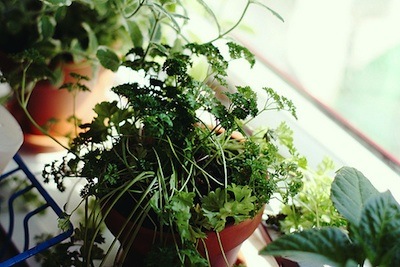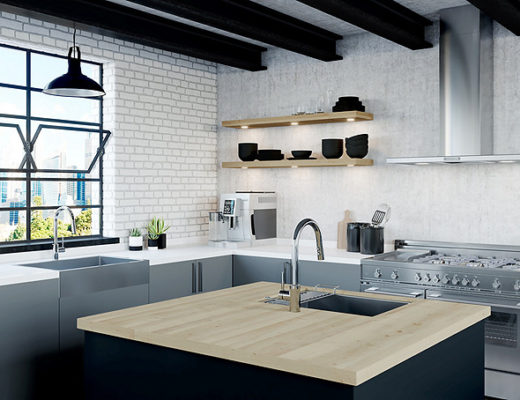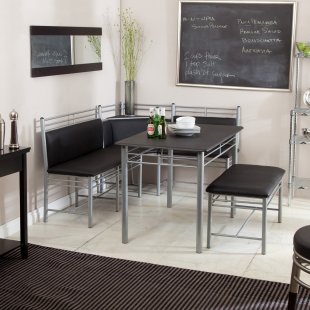“I’m sick of purchasing pricey herbs at the supermarket every week. I’d love to have my own herb garden, but I live in an apartment with not much outdoor space. What can I do?” -Lacey Dunham, Nashville, TN
For an avid chef, a home herb garden is the perfect way to keep money in your wallet and fresh, fragrant food on your plate. But what to do if your home lacks the open outdoor gardening space of, say, Martha Stewart? Our best advice is to move it inside. While your space may be limited, making smart and resourceful choices with what you have can ultimately improve your kitchen karma. Just follow these simple steps to crafting your own personalized indoor kitchen garden:

- Think of the herbs you use most often. Fancy Italian food? Parsley, basil and oregano are probably your best bets. When maintaining a small herb garden, you want to make sure waste is kept to a minimum. By making a list of herbs that star in many of your favorite dishes, you can ensure that you’ll get the most use out of the constantly growing plants.
- Scout out the perfect garden spot. If your kitchen has a window, a potted garden set on the sill is a perfect option, as it will have at least some time to absorb sunlight–a necessary ingredient in an herb’s growth. If you don’t have a sun-soaked location in your kitchen, fluorescent lights, or “grow lamps” directed toward the herbs can work as a substitute.
- Choose your growing method. A quick and easy option is to buy pre-potted seedlings (or, young herbs that are already starting to sprout) from your local nursery. Tougher, woodier herbs, such as rosemary, thyme and tarragon, fare better when born this way. You can also choose to plant your own herbs from seed packets. Leafy herbs such as cilantro, parsley and mint are good options to try out yourself. When planting your own seeds, fill a 6-inch-deep gardening pot about halfway full with a potting soil mix from your local garden center. To increase drainage and promote growth, we recommend adding a pinch of perlite to the soil. Sprinkle seeds atop the soil and top off with another quarter-inch of soil.
- Observe, maintain, and enjoy. Keep an eye on your herbs throughout the first few weeks of growth. If mold starts to develop, it is most likely a case of over-watering. Resist the urge to water until the soil is completely dry. Adding an herb-friendly fertilizer will also help keep the herb healthy year-round. Once you see the first signs of new growth, your herb is ready to be chopped, cooked, and savored.
Bon Appétit!
Photo Credits:
Flickr CC Licensed by Magic Madzik
Flickr CC Licensed by suzettesuzette



